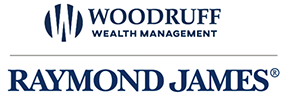Insights and Strategies
Trade war skirmishes continue
Macro Highlights for May
- The Canadian economy grew more than expected, expanding at an annualized rate of 2.2% in 1Q25, partly helped by exports as U.S. companies rushed to import goods ahead of tariffs coming into effect. Expectations are for growth to stall to effectively zero in 2Q25 as the export rush normalizes, the effect of tariffs start to kick in, and overall uncertainty in the economy puts a damper on decision-making, growth plans, and hiring commitments.
- Canada’s trade deficit surged to $7.1 billion in April, as exports to the U.S. dropped for a third month, by 15.7%, and the U.S. trade surplus shrank to $3.6 billion. This was offset only slightly with Canadian exports to the rest of the world increasing 2.9%. With 76% of Canada’s exports shipped to the U.S., presenting over $1 trillion in two-way trade, tariff disruptions and uncertainty led to exports declining 10.8% to $60.4 billion in April. Motor vehicles and parts had the biggest impact, with exports falling 17.4%.
- U.S. GDP contracted for the first time in three years, by an annualized rate of 0.2% in 1Q25, as tariffs started to impact hard data. The biggest detractor in the quarter was the rush of imports to front-run tariffs, which we would expect to normalize going forward. There’s lots of noise and (potentially) one-time events as consumers and businesses alter spending to try to deal with tariffs, but we’re watching employment data to gauge the path of the economy — if people feel confident in their employment status, they spend, if not, they find ways to cut back. The unemployment rate in the U.S. has been inching up very slowly, but was steady from March to April at 4.2%.
Financial Markets in May
- The TSX Composite continued to make new highs, delivering a 5.4% price return and a 5.6% total return in May, boosting the year-to-date price returns and total returns to 5.9% and 7.1%, respectively. Meanwhile, the S&P 500 posted a 6.2% price return and a 6.3% total return for the month. Its year-to-date price return turned positive at 0.5%, with a total return of 1.1%, all in local currency.
- In the TSX Composite, cyclical sectors like Industrials, Consumer Discretionary, Information Technology, and Financials led the way, helped by ongoing progress in tariff negotiations. Defensive sectors such as Consumer Staples, Utilities, and Communication Services lagged behind. A similar trend played out in the S&P 500, though with a bit more volatility. Sentiment got a boost from the U.S. trade truce with China announced on May 12, while the disappointing U.S. Treasury bond auction on May 21 added some downward pressure.
- Consensus expectations for 2025 EPS on the S&P 500 have been lowered from US$272 at the start of the year, to US$263 currently, while our U.S. Investment Strategy team is below consensus at US$250-255. A big question now is whether the stimulative parts of the U.S. budget can offset the economic drag caused by tariffs.
Upcoming
- After what seemed like a constructive first meeting between Prime Minister Carney and President Trump in the Oval Office, reports suggest that the two leaders are continuing their private talks on trade and security. A favourable outcome that brings greater stability in trade relations and reduces the risk of future disruptions will likely be a positive catalyst for equity markets, although certain industries are still likely to face pressures.
- Recent decisions from the U.S. Federal Reserve and the Bank of Canada have resulted in policy rates being held steady while both institutions gauge the impact of tariff policies on economic growth (or contraction), employment, and inflation. Assuming that inflation does not rise significantly, with increases seen more as transitory price level adjustments, we expect that a clearer picture on tariffs, softening economic growth, and increases in the unemployment rates will give both countries reason to lower rates twice before the end of the year.
- As we wrap up 1Q25 earnings season, we saw good earnings growth despite more caution into the remainder of the year as revenues and costs start to show the impact of tariffs. 2Q25 will be a telling period as we see how companies balance slower revenue growth, the pass through of rising costs into higher prices, higher input costs, reductions to overhead and labour/workforce, and pressure on margins. With a softening U.S. economy and margin compression from higher costs to U.S. companies, our U.S. team has reduced its S&P 500 EPS forecast to US$250-255, from US$265. Our S&P 500 target has similarly been reduced to 5,800, from 6,375 at the start of the year. We will have a better idea about the longevity of these tariffs over the next weeks and months, although given the U.S. administration’s goals of generating extra government revenue and enticing companies to commit to multi-year projects to move manufacturing operations, the initial intent seems to be that these will be effectively permanent, but with room for negotiation as to the rates and exclusions. We will similarly weigh adjustments to our TSX target as the longevity and breadth of tariffs become more certain, with consideration to the potential impact to the Canadian economy from a slowing U.S. economy, and quarterly earnings results and guidance. For now, however, our TSX Composite year-end target has remained unchanged at 26,300.





